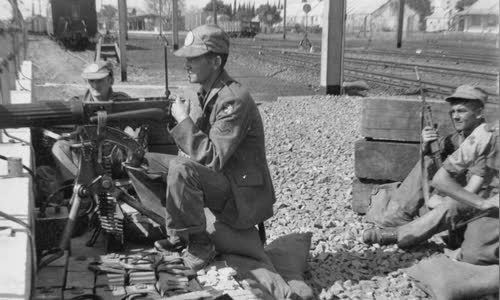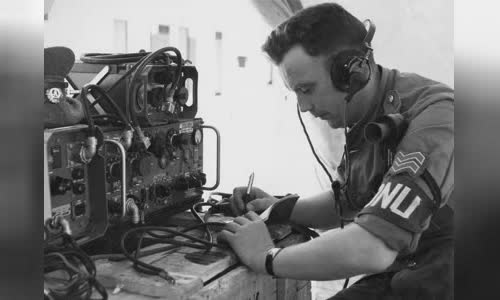158 Irish peacekeepers used to fight with rebels nearly 20 times for 5 days in 1961.
The Irish army sent forces to the Republic of Congo as a mission to preserve the United Nations Peace, in the context of this National African national sweeping violence in the early days after gaining independence from Belgium in June

Photo: Wikipedia
The Republic of Congo is rich in natural resources, but mostly concentrated in Katanga region in the southeast.
Irish peacekeepers deployed in the Republic of Congo in 1960. Photo: Wikipedia.
Political instability and ethnic conflicts in the Republic of Congo suddenly outbreak into comprehensive civil war, making the United Nations decide to deploy the peacekeeping force to the country.
The peacekeeping unit was deployed to Katanga as the Company A of the 35 Irish Infantry Battalion, including 158 soldiers without fighting experience, equipped with the majority of residual weapons from World War II
They also have a truck and two jeeps, while the radio communication is not smooth.
The political situation in Katanga continued to deteriorate, while the local people also opposed the presence of Irish soldiers.
On September 13, the Katanga rebel group began attacking the Company A. That morning, most soldiers were concentrated on Sunday morning, while Sergeant John Monahan had just shot and discovered Katangan rebels
Monahan rushed to the nearest machine gun and quickly fired, and alarmed his teammates.
While putting the key weapon into the combat, Irish soldiers were surprised by an enemy's series of mortars and realized he was overwhelmed by firepower.
A team A is attacked by a mortar and heavy machine gun, while a Fouga CM.170 Magister training plane pants on the head.

Photo: Wikipedia
Radio specialist at AN AT A Republic of Congo in 1960. Photo: Wikipedia.
The Quinlan captain ordered the storage of clean water before the attack, but the struggle stretched for many days made them deplete drinking water and ammunition.
Each attack has usually has 600 gunmen supported by 81 mm mortar and a 75 mm battle cannon.
About 500 peacekeepers Irish and Sweden, with India's Gurkha forces deployed near Katanga many times to find ways to relieve the company A. However, mercenary units, with the core
Katanga rebels are constantly being pushed back, but still get closer to the positions of Irish soldiers.
A Norwegian pilot brave a helicopter to the nearby lake to take water supplies to the Company A, but the country here was contaminated and could not be used.
From September 13-17, Irish soldiers suffered fierce attacks with limited response.
After 5 days of holding, the company a rebels surrendered after exhausting water and ammunition.
A team soldiers A were considered coward for dozens of years later, but the Jadotville siege of 2016 on this battle helped define their fighting process.



 Richie Embry
Richie Embry







